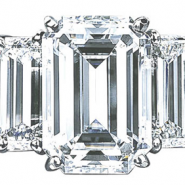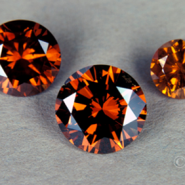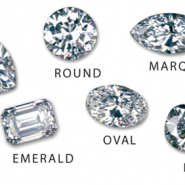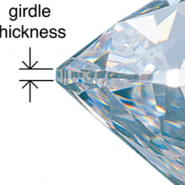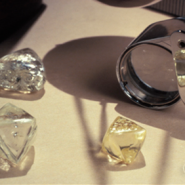Diamond clarity is one of the four quality factors (the 4Cs) that describe and determine the value of a diamond. By definition, clarity means “a gemstone’s relative freedom from inclusions and blemishes.” These two terms are locational- blemishes are found on the outside of the gem and inclusions are located on the inside. Both of these clarity characteristics can dim the brilliance of a diamond, though some are so minute that they are invisible to the naked eye.
Read More >>Angelina Jolie and Brad Pitt made headlines earlier this year when they finally announced their engagement. Soon thereafter, Jolie was spotted wearing an engagement ring that featured a large, Emerald cut diamond center stone. While an Emerald cut center stone is not the traditional look for an engagement ring, non-traditional engagement rings seem to be making news more frequently.
Read More >>Often when picturing a diamond, we envision the classic colorless gem depicted in films, showcased in engagement rings, or displayed with other popular jewelry in glass cases. A colorless diamond is the clear, classic diamond we envision. Many “colorless” diamonds possess very subtle hints of yellow or brown, colors that can affect the value of the stone. But diamonds come in colors that extend beyond the D-to-Z color scale. And when the color of the stone is strong enough, the diamond becomes known as a “fancy-color diamond.”
Read More >>When it comes to diamonds, most consumers tend to use the words “cut” and “shape” interchangeably. But for diamond professionals, there is a big difference. Diamond Shape refers to the outline of the stone (pear, oval, round, etc.). Diamond cut refers to a stone’s facet arrangement. So a shape can be faceted in a variety of ways, or cutting styles.
Read More >>When a diamond interacts with light, every angle and every facet affects the amount of light returned to the eye. The sparkle of a diamond, then, has everything to do with how well the cut of the diamond was planned and executed. Although a diamond’s value is based on its unique combination of color, clarity, cut, and carat weight (the 4Cs), a diamond’s cut is the most complex to assess, and it’s the only component that can be directly affected by the diamond cutter.
Read More >>Most consumers don’t realize the long, complicated, precarious journey a diamond takes from its humble beginning amidst tons of rock in the Earth to its sparkling transformation in a jewelry store counter. An especially critical point in the diamond’s journey is its time with the diamond artisan, who must cut the diamond to maximize its beauty.
Read More >>

